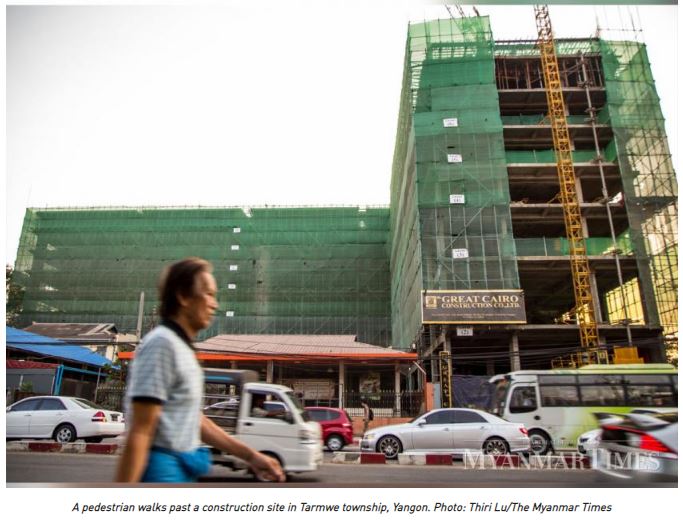Myanmar: New labour law paves way for worker safety standards
Myanmar’s parliament has enacted the Occupational Safety and Health (OSH) Law to promote safe and secure working environments for labourers and workers.
The new law, signed by President U Win Myint on March 15, is expected to pave the way for the first legally-established health and safety standards in the country. It stipulated that OSH standards will be designed “in accordance with international and regional standards and compatible to the nation’s situation”.
The regulations will apply to both domestic and foreign companies, joint ventures, government departments and organisations This includes the hospitality, extractive, transport, construction, retail, services and manufacturing industries.
Myanmar has a poor record of keeping health, safety and environment data and workplace accidents. For example, few mines have an incident registry, making it impossible to assess the accident rate. But incidents of construction or mining workers being seriously injured or killed are common and widely reported.
Last July a landslide in northern Kachin State killed at least 15 people and injured more than 40, after a similar collapse in the same area killed at least 14 jade miners two months earlier. Nine workers were injured last September when a two-storey building under construction collapsed in Mandalay’s Pyigyitagun township.
The new law provides for the establishment of a new tripartite National OSH Council – which will involve workers, employers and government – and will require employers to set up OSH committees at workplace level to help prevent accidents.
For the International Labour Organization (ILO), the legislation represents a major step towards preventing occupational injuries, diseases and deaths.
Rory Mungoven, ILO’s liaison officer in Myanmar, said: “OSH compliance not only protects workers, but increases economic efficiency and productivity as a whole. It is also important for attracting investment and integrating into global supply chains.”
“It will be important to clarify the coverage and scope of the law, and we expect this will be done through different by-laws and regulations,” Mr Mungoven told this newspaper.
“We had also hoped the law could be as universal as possible, but it will at least provide the basis for a national OSH system which can be further added and elaborated over time.”
There will be many challenges in implementing a new national OSH system. he added. Decrees and regulations will need to be drafted, data gathering systems put in place, and education and awareness raising programmes scaled up.
Regulations on work safety and health protection have been very limited in Myanmar, with no legally established safety standards. Companies are advised to apply the IFC Performance Standards and World Bank Group Environmental, Health and Safety Guidelines in the absence of Myanmar laws.
In the case of telecoms tower construction, studies reveal that safety policies were up to the telecoms companies and their subcontractors.
“Some bring with them established governance, health, safety, environment and labour compliance frameworks and monitor them with spot checks, while others do not operate any systematic safety procedures,” the Myanmar Centre for Responsible Business (MCRB) observed in its 2015 ICT sector-wide impact assessment.
AustCham Myanmar, through its Responsible Investment Working Group co-chaired by MCRB’s Vicky Bowman, examined the draft law in 2017 and submitted comments. CEO Jodi Weedon said the group “fully agreed” with the need for a new OSH Law but had “concerns that many of the provisions in the draft were unclear and contained ambiguous requirements.”
The new law is the latest of a series of labour laws passed by parliament since the 2011 elections, including the 2012 Social Security Law, the 2013 Minimum Wage Act and the 2013 Employment and Skills Development Law.
Source: https://www.mmtimes.com/news/new-labour-law-paves-way-worker-safety-standards.html


 Thailand
Thailand




